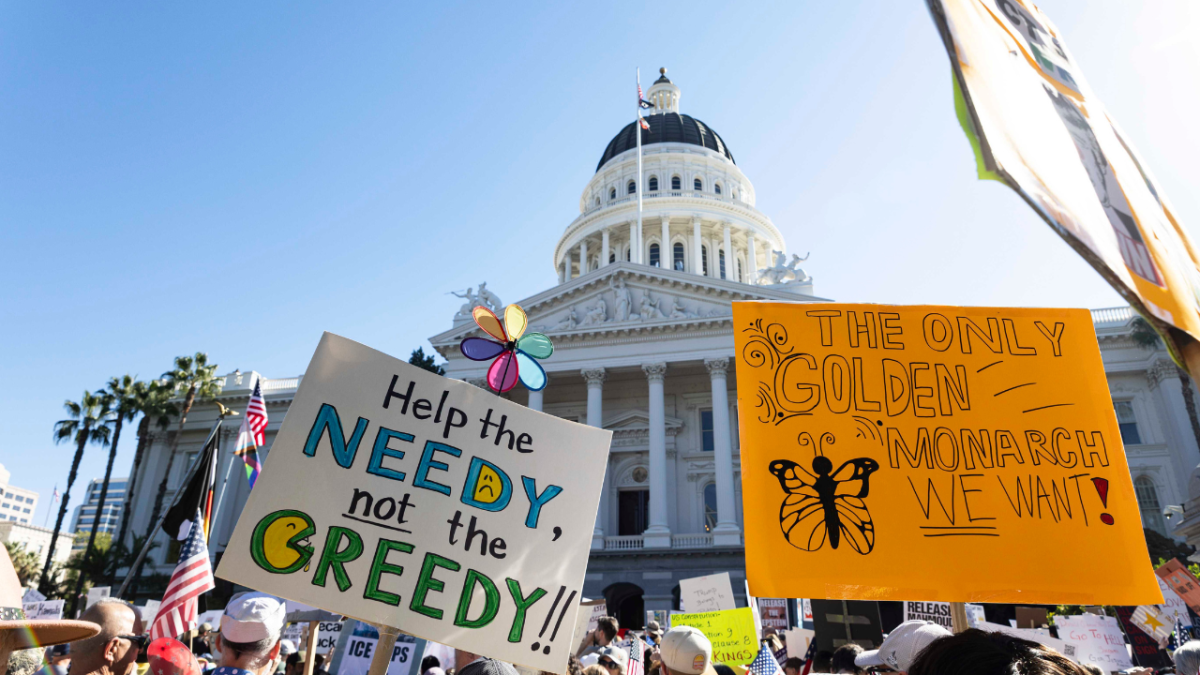Book-to-film adaptions: success vs. flop
October 23, 2014
Whether it features a girl fighting in a dystopian war with a bow and arrow or a young wizard facing his lifelong nemesis, there have been a number of film adaptations of bestselling novels in recent years.
While there has been visually impressive adaptations, there has also been some cringe-worthy ones which can fall short in comparison to their original, literary counterparts.
Sacramento State students discuss what criteria makes up a high quality book-to-movie adaptation.
“What makes a movie adaptation good is what makes anything good—passion for it,” said Miranda O’Connor, 20, an English major. “It has to have a basis in love. If the project is driven by love and they wanted to make it in a form more people can see and enjoy, then it’ll be good.”
A.V. Club film critics Tasha Robinson and Scott Tobias wrote “What makes a good book-to-film adaptation?” in 2012 following the release of the first “The Hunger Games” film. In this article they argued the factors which contribute to an adaptation being deemed a success or a flop.
“If book-to-film adaptations can fail by being too faithful or by being not faithful enough, what’s left?” Robinson asked. “Is it fair for people who have read the book to complain about it not giving them something new, when it’s still serving a purpose by accurately bringing the story to people who haven’t read the book? Is it possible to please or even serve both audiences? What makes a good book adaptation, anyway?”
The last question in particular results in various answers.
“It’s always about the story,” said theater and film professor Roberto Pomo. “And that’s the bug-a-boo when it comes to transferring and bridging the narrative of a book to the narrative of a visual image.”
There seems to be a growing mindset in Hollywood that the more visually impressive the movie, the more tickets will be sold. Some students reason without a solid story, special effects can only go so far.
“I think having just a cool visual element with no real story, it’s like having a cake but nothing on the inside,” said film major Geovanie Brooks, 24. “Like a pie you throw in someone’s face; at first you’re excited to get to the filling but once you throw it, you realize it’s all frosting on top and nothing in the middle.”
Brooks explains how within the time constraints of a film, details such as internal monologues and character development, which reeled in reading audiences in the first place, fall by the wayside.
“More substance is necessary in films, especially if you’re dealing with a fanbase of readers, people who usually pick up a book because of its substance,” Brooks said. “You sit and read through days and weeks of a book and it’s a bigger time investment but you get that substance that sometimes movies are lacking.”
Pomo discusses novels, films and the gaps present between the two.
“With a book you have to take your time with it, you have to involve yourself in the writing, you have to involve yourself in the characters. Film doesn’t have time for that. Film is immediate,” Pomo said. “Because as post-modern human beings, we are used to our senses always being bombarded by visual stimuli so when we go to a film we expect it to be quick, accessible and it goes right to the brain like a visual drug.”
He said since moviegoers are used to being entertained in a short amount of time, the true meaning of a story can get left behind.
“When you translate a book narrative to a film narrative, you’re always going to lose out. I can’t think of any examples where it’s like, ‘Gee, the film is better than the book,’” Pomo said. “Film has conditioned us as a society to expect a certain amount of time we’re going to dedicate to seeing a film, and people don’t want to see a history, they want to see a love story.”
Even if adaptations may attempt to tell the same story, others view novels and their films as two separate entities.
“It’s almost unfair to compare them because film is an entirely different medium,” said Caitlyn Wardell, 21, a sociology major. “I can enjoy a book and enjoy its movie. I kind of like to view them as separate works of art that intertwine.”
As Robinson and Tobias examined, sometimes how closely the film resembles the novel does not determine how great of an adaptation it is.
“What I want is not faithfulness, but an active engagement with the material,” Tobias said. “The question filmmakers should ask is not, ‘How can I bring this story to the screen without losing anything?,’ but ‘What in this book do I want to emphasize?’”
Instead of reiterating what readers already know will happen, Tobias said a film adaptation should focus on what important message it wants viewers to take away after watching. He asked if the filmmakers cannot create a work that exists independently from the novel, then what is the point of making it?
“There’s also the fact that filmmakers rarely have an antagonistic relationship to the book they’re adapting,” Tobias said. “It would be fascinating if they did, but most want to do right by something they loved.”
In this sense, the point is not to pit books against their movie adaptations, but instead view them as two art forms. This means both, if executed well, have the potential to enrich the overall meaning of the story for viewers and readers alike.
“It’s good to experience the story on different levels,” Wardell said. “Getting more than one perspective on the same story, it keeps the book alive.”
























































































































